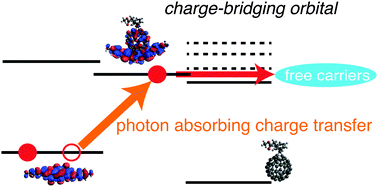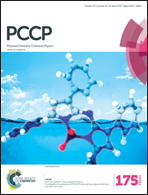Photon-absorbing charge-bridging states in organic bulk heterojunctions consisting of diketopyrrolopyrrole derivatives and PCBM†
Abstract
We have investigated the photo- and electrochemical properties of five diketopyrrolopyrrole (DPP) derivatives both experimentally and theoretically. In the experimental study, we found that a blend of a DPP derivative named D2 and phenyl-C61-butyric acid methyl ester (PCBM) exhibits the highest internal quantum efficiency (IQE) and power convergence efficiency (PCE) among the five derivatives investigated. In the theoretical study, we found that the open-circuit voltage can be estimated from the difference between the energy gap of frontier orbitals and the voltage loss and that the latter is suppressed when the IQE is large. Then, to investigate the factors that influence the IQE, investigations on charge recombination, hole transfer, and charge transfer induced by photoabsorption were conducted for the complexes of each DPP derivative and PCBM. It was found that D2/PCBM exhibits the largest charge-bridging upon photoabsorption, which leads to the highest IQE and PCE among the five DPP derivatives.


 Please wait while we load your content...
Please wait while we load your content...